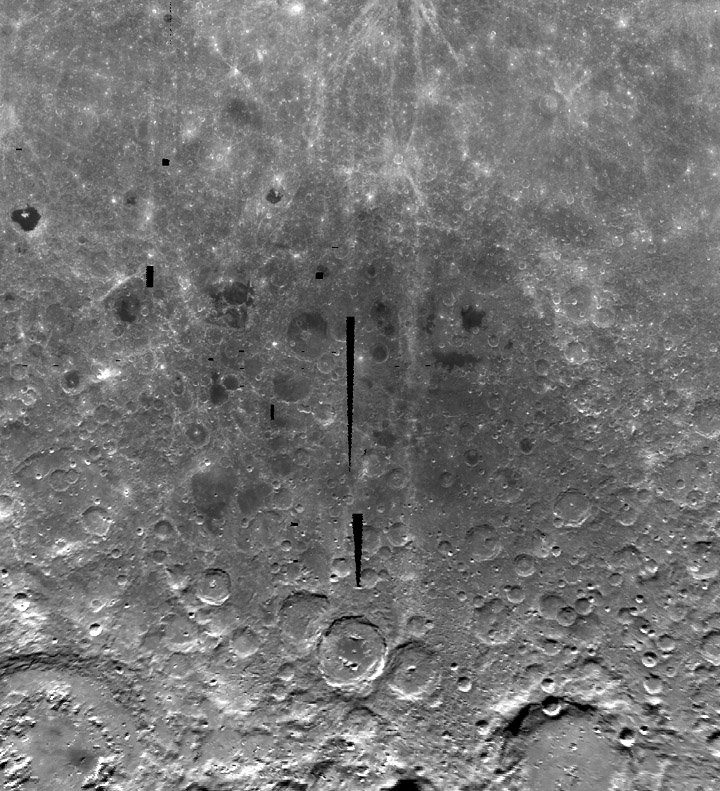
South Pole-Aitken basin image by Clementine fromMap-A-Planet
The US National Academy of Science just released a FREE study The Scientific Context for Exploration of the Moon that proposes how NASA should use science to guide the exploration of the Moon. Here are the main points.
Principal Finding: Lunar activities apply to broad scientific and exploration concerns.
Finding 1: Enabling activities are critical in the near-term. (NASA should establish programs to stimulate lunar research and to analysze lunar data).
Finding 2: Explore the South Pole-Aitken basin. (Oldest and largest basin in solar system).
Finding 3: Determine the composition and structure of the lunar interior. (Establish a global network of geophysical stations).
Finding 4: Maximize the diversity of lunar samples. (Sample many places from the complex and heterogeneous body).
Finding 5: Proceed with lunar surface mission development and the site selection process. (Begin to use science goals to identify potential landing sites).
Finding 6: Understand the lunar polar deposits and environment, (What is the source, nature and extent of polar ices, if they exist).
Finding 7: Understand and characterize the lunar atmosphere. (Characterize lunar atmosphere early, before human activities change it).
Finding 8: Evaluate the Moon’s potential as an observation platform. (Investigate value of the Moon to study Earth, Sun-Earth connections and astronomy).
Finding 9: Establish strong ties with international programs. (Share data and costs of science exploration).
Related Links:
Rükl p. 191
Yesterday's LPOD: Terrific Taruntius
Tomorrow's LPOD: Selenestice
COMMENTS?
Register, Log in, and join in the comments.



